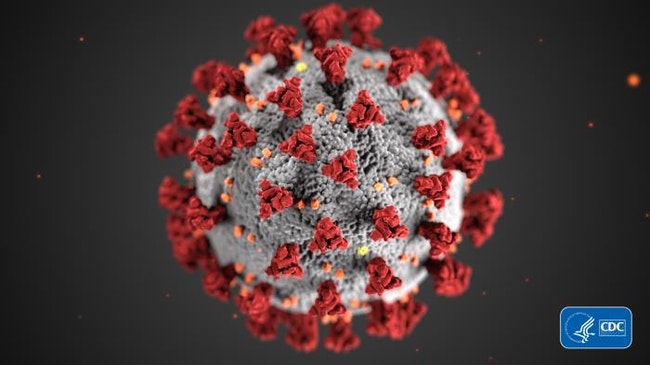 This illustration, created at the Centers for Disease Control and Prevention (CDC), reveals ultrastructural morphology exhibited by coronaviruses. Credit: Alissa Eckert, MS; Dan Higgins, MAM
This illustration, created at the Centers for Disease Control and Prevention (CDC), reveals ultrastructural morphology exhibited by coronaviruses. Credit: Alissa Eckert, MS; Dan Higgins, MAM
Coronavirus resources: CDC on the coronavirus, Oregon Health Authority resources, Washington County resources, Oregonian reporting on the coronavirus, OPB glossary of coronavirus terms, NYTimes free reporting on the coronavirus.
The Oregon Health Authority (OHA) and the Oregon Department of Agriculture (ODA) released a joint statement saying there is no evidence that animal or human food, or food packaging, is associated with the transmission of COVID-19.
The OHA and ODA also announced they are partnering with the federal Center for Disease Control (CDC). Working together, these three government agencies will offer guidance to employers to help them rest assured that the health and safety of their workers, and the food and agriculture workforce, is a priority in order to help keep the food supply chain strong.
The statement also says food products do not need to be recalled or withdrawn from the market if farmworkers or processing plant workers test positive for the coronavirus.
Dr. Paul Cieslak, a senior health advisor for OHA’s COVID-19 response team, said the virus is believed to spread mainly from person to person or through respiratory droplets produced when someone who has the coronavirus sneezes or coughs.
[We rely on subscribers to keep the lights on at the Banks Post. Support us with a digital subscription: Click here to start]
“A person can get COVID-19 by touching a surface that an infected person has touched, which is why it is so important to get in the habit of washing your hands often including before and after preparing meals, before eating and after you come home if you’ve been out,” Cieslak said.
ODA Director Alexis Taylor said her agency’s top priority is to provide support and guidance to Oregon’s grocery stores, food processors, food banks, and the agriculture industry to help protect workers and the public from being infected.
“Our food safety inspectors are still on the job offering remote or in-person inspections, doing their best to keep the food supply moving, and helping provide the safest food possible to all Oregonians,” Taylor said.
Guidance on how to protect grocery store, food processing, and distribution workers include the following:
• Enforce social distancing in lines by separating customers and employees by at least six feet whenever possible.
• Implement visual cues, such as tape on the floor every six feet in checkout lines, or floor markings customers are required to stand behind until it’s time to complete their transaction.
• Consider limiting the number of people allowed in the store at a given time, or setting special hours for those most vulnerable, such as those who are immuno-compromised or elderly.
• Consider operating only every other checkout line.
Additional guidance on “what to do if you have a COVID-19 confirmed positive or exposed worker or workers in your food production, storage, or distribution operations” is available on the FDA’s website.




